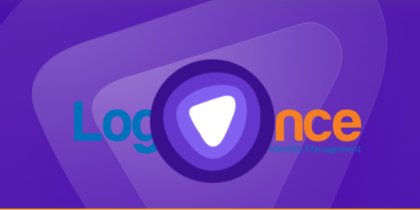Unmanaged accounts may look harmless, but they’re one of the biggest blind spots in enterprise security. Every unused login or forgotten credential is an open invitation for attackers to slip past defenses and access sensitive data.
The longer these accounts remain active, the greater the risk of breaches, compliance failures, and costly downtime. In this guide, we’ll cover why unmanaged accounts are dangerous and how you can close this security gap for good:
Your credentials may be at risk.
Run a free email scan to see if your data has been exposed — no signup needed.
What are Unmanaged Accounts?
Unmanaged accounts (also referred to as shadow accounts) are user accounts that remain active without proper oversight. They’re often created during employee onboarding, SaaS sign-ups, or third-party integrations, but not deactivated when no longer needed.
Over time, these forgotten logins pile up, leaving behind orphaned accounts that nobody monitors or maintains. Unlike managed accounts, which are tracked through identity systems, unmanaged accounts fly under the radar and quietly expand your attack surface.
Here are some examples of unmanaged accounts:
- Old SaaS trial accounts still tied to corporate data.
- Shared accounts with no clear owner or monitoring.
- Logins belonging to former employees that were never disabled.
- Third-party vendor access that remains active after a contract ends.
The Security Risks of Unmanaged Accounts
Unmanaged accounts expand your attack surface and give adversaries hidden entry points into your systems. Left unchecked, they undermine security controls, expose sensitive data, and create risks that can escalate into full-scale breaches.
- Easy Entry for Attackers: Forgotten accounts often use old or weak passwords that were never rotated. Attackers can target these with brute force or credential stuffing attacks, slipping in without triggering alarms. Since no one is monitoring these accounts, intrusions can go undetected for weeks or even months.
- Privilege Escalation and Lateral Movement: Once attackers gain access, unmanaged accounts become stepping stones to more valuable assets. With basic credentials in hand, they can escalate privileges, explore network shares, and eventually reach sensitive databases or administrative systems, all while staying under the radar.
- Expanded Attack Surface: Every unmanaged account is another doorway into your network. Even if unused, it can still be targeted by phishing, malware, or automated bots scanning for exposed credentials. The more doors you leave open, the harder it becomes to defend against persistent attackers.
- Insider Threats: When employees leave or vendors complete their contracts, their accounts should be disabled immediately. If they aren’t, those individuals may still have entry points into company systems. Whether through negligence or malice, lingering access creates a dangerous channel for data theft or sabotage.
Common Scenarios Where Unmanaged Accounts Appear
Unmanaged accounts often arise when access isn’t properly tracked or removed. The most frequent scenarios include:
Former Employees Not Fully Offboarded
When employees leave and their accounts remain active, the risk doubles: they may still access sensitive systems, and those accounts become low-hanging fruit for attackers. Without a strict offboarding process, these leftover logins create a lasting vulnerability.
SaaS Trial Accounts Left Connected
Teams frequently sign up for SaaS tools to test features or integrations. After the trial ends, those accounts are rarely disabled, especially if tied to business email addresses. Even inactive, they often retain access to company data or third-party services, widening the attack surface.
Shared Accounts Without Ownership
Accounts shared across multiple employees like generic admin or support logins are rarely tracked to a specific person, meaning they’re easily overlooked during audits. If credentials are leaked or misused, it becomes nearly impossible to identify who was responsible.
Third-Party Vendor Access
Vendors often need temporary access to company systems. When unrevoked at the end of a contract, unmanaged accounts remain active. As these accounts belong to external parties, they’re harder to monitor, making them one of the most dangerous unmanaged account types.
Real-World Consequences of Unmanaged Accounts
The risks of unmanaged accounts aren’t theoretical. They translate directly into breaches, financial loss, and reputational damage. Here are some of the most significant consequences organizations face:
- Data Breaches and Unauthorized Access: Unmanaged accounts provide attackers with ready-made credentials to infiltrate systems. Once inside, they can steal sensitive data and move deeper into critical environments without immediate detection.
- Ransomware Infiltration: Dormant or forgotten accounts often serve as the foothold attackers need to launch ransomware. By gaining access through these accounts, they can encrypt files, disrupt services, and hold business operations hostage.
- Insider Misuse: Former employees or contractors with lingering access may exploit unmanaged accounts. This kind of misuse can be just as damaging as an external breach, since it originates from accounts that should no longer exist.
- Operational Downtime: An exploited unmanaged account can bring systems offline, interrupt service delivery, and damage customer trust. The longer it takes to detect and remediate, the greater the financial and reputational fallout.
How to Identify Unmanaged Accounts
Unmanaged accounts often hide in plain sight. Finding them requires visibility across systems and consistent monitoring. Key methods include:
Regular Access Audits
Systematic reviews of Active Directory, cloud services, and SaaS platforms can reveal accounts that don’t match current employees or approved roles. Audits should check for duplicate accounts, unused logins, and credentials belonging to former staff. Make these reviews part of quarterly routines, so unmanaged accounts are caught before they turn into liabilities.
Automated Discovery Tools
Manual checks can’t keep up with the scale of modern IT environments. Identity and access management tools or SIEM solutions can automatically scan for orphaned, inactive, or unlinked accounts across on-premises and cloud systems. These tools provide real-time visibility, making it easier to flag suspicious accounts that administrators might otherwise miss.
Privileged Access Reviews
Unmanaged privileged accounts pose the greatest danger because of their elevated rights. Reviewing who holds administrative access, what systems they can reach, and whether those privileges are still needed is critical. Any account with excessive or outdated permissions should either be revoked or reassigned under proper oversight.
Monitoring Dormant Activity
Inactive accounts that suddenly see login attempts or unusual activity are often a sign of compromise. Setting automated alerts for dormant account activity helps security teams respond before attackers escalate their access. Tracking last login dates and correlating them with user status provides another layer of visibility into accounts that shouldn’t still be active.
Best Practices for Preventing Unmanaged Accounts
The most effective way to deal with unmanaged accounts is to stop them from existing in the first place. Strong processes and access controls ensure that every account is tracked from creation to deletion.
- Strong Offboarding Processes: Make account removal a mandatory part of employee and vendor exit procedures. All logins, tokens, and integrations tied to the departing individual should be revoked immediately to prevent lingering access.
- Centralized Identity Management: Use Single Sign-On (SSO) and Identity Access Management (IAM) to unify authentication. Centralized systems make it easier to see which accounts exist, monitor their usage, and disable them quickly.
- Password Manager Deployment: A password manager centralizes credential storage and enforces strong password policies. Shared access can be revoked instantly, reducing the risk of accounts persisting with outdated or insecure credentials.
- Principle of Least Privilege: Grant users only the access they need to perform their role. Fewer permissions reduce the risk that unmanaged accounts, if compromised, can cause widespread damage.
- Regular Credential Rotation: Set policies to rotate passwords, API keys, and access tokens on a regular basis. Accounts that are no longer in use will quickly surface when they fail credential updates.
Final Word
Unmanaged accounts may start as small oversights, but they quickly grow into serious security gaps. By tightening offboarding, centralizing identity management, and enforcing strong credential practices, you can reduce the chances of these accounts slipping through.









